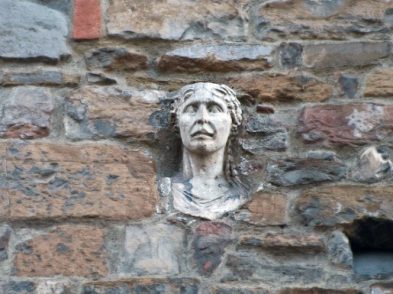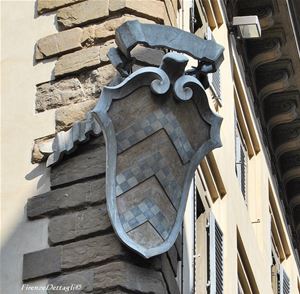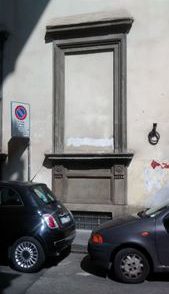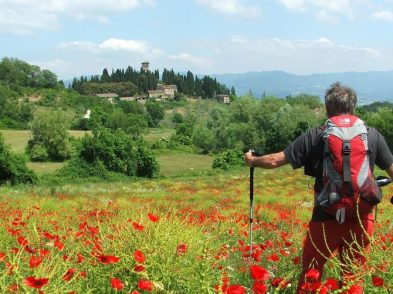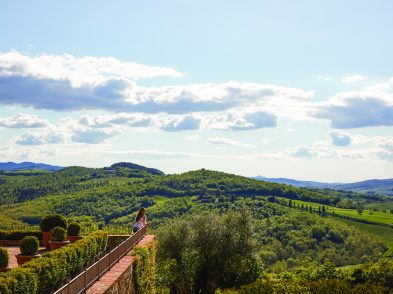Once a year,
the quiet seaside town of Viareggio comes alive with colour, parades, street
parties, masks and costumes. During February and March, the Tuscan port town
fills with thousands of locals and visitors who participate in a fantastic,
non-stop celebration of carnival, the highlights of which are huge weekly
parades.
Viareggio’s carnival tradition started nearly 140 years
ago, in 1873, when a group of young aristocrats, having a drink in one of the
local casinos, decided to organise an open-air parade on martedi grasso (Fat Tuesday), a day of excess and
partying before the austerity of the 40-day period of Lent. The first parade
was such a hit that every year the festivities became more elaborate and
extravagant, eventually becoming one of the grandest in the world, attracting
over 300,000 tourists per parade.
The main
feature of the parades is the monumental floats, some as high as six stories,
with giant, moving sculptures and colourful caricatures of politicians and
other well-known figures that tower comically above the crowds as they move
through the city.
The
tradition of these large floats has its origins in Viareggio’s dockyards. The
carpenters and ironsmiths who worked there were able to build huge, but very
light, structures of wood, jute and plaster. In 1925, some of the builders
developed the technique of using carta a calco (a form of papier-mâché) to enable even bigger and
more intricate designs. The models they produced were so massive and so
apparently gravity-defying that the float constructors were hailed as
‘papier-mâché wizards’ by the international press.
These days
there is a competition for the best-designed float, and it is not unusual for a
float to take up to six months to build, with the help of 100 craftspeople. Construction takes place at
the Cittadella del Carnevale, a specially built complex of hangars and
workshops outside of Viareggio. First, huge models of the characters and
structures are made from clay, wood and wire; then plaster is applied to the
surface. Finally, papier-mâché is applied, and the materials inside are then
removed so all that remains is a very light yet sturdy, hollow paper structure.
The paper used in this process is the recycled paper of national dailies, and
it is considered an important way to reuse these materials.
The wooden
levers are then attached: the muscle power of up to 200 people on each float
will create the life-like movements of the figures’ hands, heads, eyes and
mouths. Only after all this construction can the painting of the figures begin,
a process that may continue up until about two hours before the first parade.
Then, finally, the results of around 88,000 hours of work are ready to be
wheeled out, assembled by cranes and paraded amongst the excited crowd filling
the streets and seaside boulevard.
Anyone
interested in the process of float making can take part in workshops that run
throughout the year at the Cittadella. Participants can learn how to mould
clay, apply plaster and make the papier-mâché structures (while getting
thoroughly messy in the process!). The Cittadella also houses a museum about
the Viareggio Carnival, which displays models of the best floats used over the
years, dating from 1927, with other models showing the stages of construction,
including the levers used to make motion. This year, the museum has a large
exhibition of contemporary art, displaying works based on the themes of the
current floats, by important Italian and international artists. For anyone
wishing to see the floats in peace and quiet, they will be displayed in the
hangers at the Cittadella from Monday to Saturday, and every day from the end
of the carnival until July.
Among the
floats of 2012 is a caricature of French president Nicholas Sarkozy, who sits
on a rearing white horse, searching for the lost glory and imperialism of the
Napoleonic era by launching materialistic wars in the name of liberty and
democracy. Visitors will also see ‘king’ Berlusconi on a giant chessboard,
finally in checkmate, being dragged from his golden throne by pawns and
bishops, who represent the law and the judiciary. Other floats feature the
mayor of Florence, Matteo Renzi; former economy minister Giulio Tremonti; and
Mario Draghi, former head of the Bank of Italy and now president of the
European Central Bank.
The six
parades, the most ever to date, began on February 5 and 12. The remaining four
are on February 19, 21 and 26, and March 3. Music and dancing will fill the
streets as the gargantuan floats, as well as numerous smaller ones, make their
way through the crowds filling Viareggio’s avenues. The final parade is held at
night, the event made magical as the streets and floats will be illuminated.
This parade continues late into the night, finishing with the announcement of
the winning floats and a spectacular fireworks display over the city.
Between the
parades, Viareggio celebrates carnival with open-air parties, masked balls
(including one for children on February 21), sports events and the traditional
carnival foods, served in local restaurants and outdoor food stands. For
details, see the information boxes on this page.
Details of the history and events of
Viareggio’s Carnival can be explored on the new iPhone and iPad App. See www.appcarnevalediviareggio.it for more
information.
VIAREGGIO CARNIVAL 2012:
Parades: February (5, 12) 19, 21, 26 at 3pm; March 3 at 7pm. The parade on February 21 is free.
Open-air parties: February (4,11) 18, 20, 25 at
15:30 in Piazza Mazzini and the Centro Commericale Naturale in Viarreggio,
featuring music, games performances and other entertainment. For the details of
these and other events, and for booking tickets, consult the official website, www.viareggio.ilcarnevale.com,
which also provides details on the Cittadella, including workshops, viewing the
floats, the museum and the contemporary art exhibit.
Museum hours: Thursday to Saturday, 4pm to 7pm. On parade days, it is open 9:30am to 11:30am. To book a workshop or a guided tour of the hangars, send an email to cittadelladelcarnevale@ilcarnevale.com (workshops and tours cost 4 euro).

